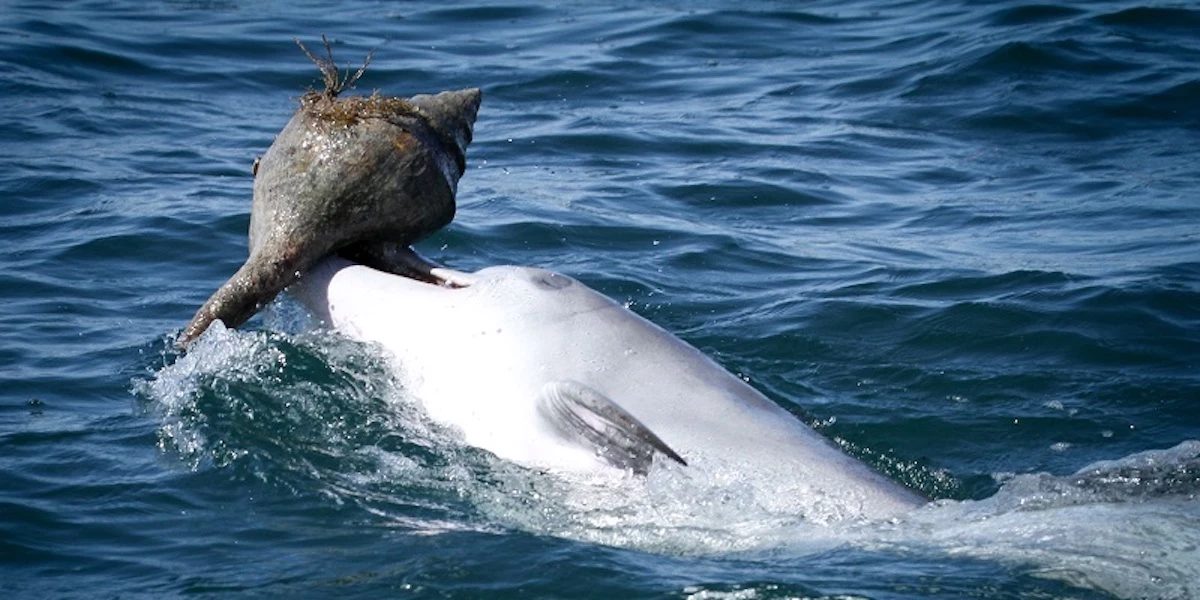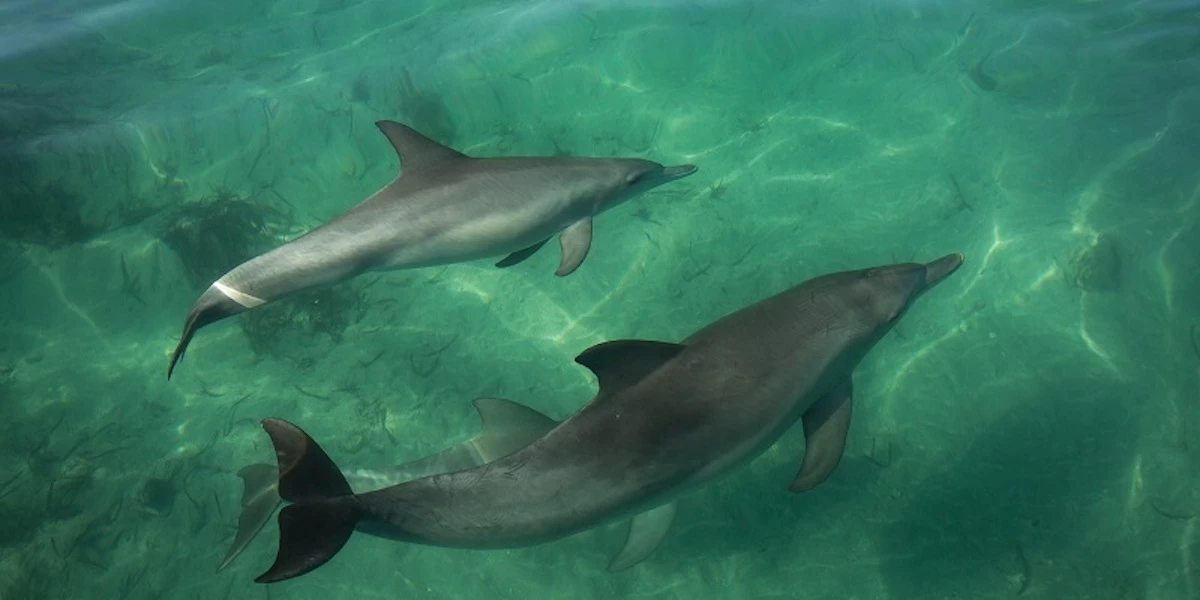Being among the most intelligent creatures on the planet, dolphins are capable of some incredible behaviors, from the clicks and whistles they use to communicate to their incredible acrobatics both under and above the water. When it comes to securing food, it was always thought that dolphins learn their foraging skills exclusively from their mothers, but scientists have now discovered that they can learn them off their peers, too, providing the first evidence of this so-called horizontal social transmission.
The research was spearheaded by Dr Sonja Wild as part of a PhD project at the University of Leeds, and focused on the behavior of a well-studied group of dolphins in Shark Bay, off the coast of Western Australia. Studies in the 1990s revealed a fascinating behavior in these creatures, in which scientists observed a previously unseen foraging technique known as “shelling.”
Shelling sees the dolphins sniff out prey that has taken shelter in the empty shells left behind by giant sea snails, which they snaffle with their beaks and then carry to the surface. Once there, they shake the shells to empty them, much like you might empty the last few crisps from the packet, to claim their meal. This behavior was thought to be passed from mother to calf, in what scientists refer to as vertical social transmission.

The international research team studied this shelling behavior in the dolphins of Shark Bay between 2007 and 2018 through boat-based surveys, in which they identified 1,035 individual animals and documented a total of 42 instances of shelling carried out by 19 different dolphins. Behavioral, genetic and environmental data was then used to trace the passage of this behavior, with the team concluding that it had indeed been learned from their peers.
“These results were quite surprising, as dolphins tend to be conservative, with calves following a ‘do-as-mother-does’ strategy for learning foraging behaviors,” says Wild. “However, our results show that dolphins are definitely capable, and in the case of shelling, also motivated to learn new foraging tactics outside the mother-calf bond. This opens the door to a new understanding of how dolphins may be able to behaviorally adapt to changing environments, as learning from one’s peers allows for a rapid spread of novel behavior across populations.”
According to the team, this is the first quantitative evidence of horizontal transmission of a foraging tactic in toothed whales, with parallels to be drawn with the learned behaviors of apes, chimpanzees and of course, humans.
“The fact that shelling is socially transmitted among dolphin peers rather than between mother and offspring sets an important milestone, and highlights similarities with certain primates, who also rely on both vertical and horizontal learning of foraging behavior,” says Professor Michael Krützen, from the University of Zurich and senior author of the study. “Despite their divergent evolutionary histories and the fact they occupy such different environments: both dolphins and great apes are long-lived, large-brained mammals with high capacities for innovation and the cultural transmission of behaviors.”
The research was published in the journal Current Biology.
Source: University of Leeds




